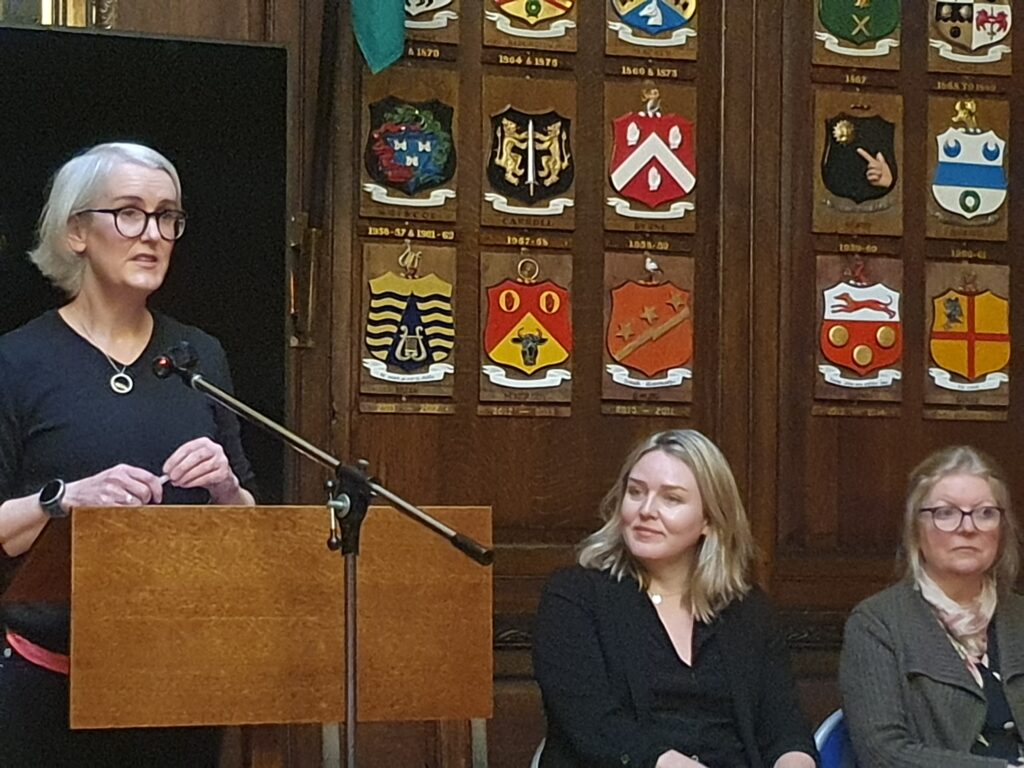On St Brigid’s Day, the Lord Mayor of Dublin held an event in the Mansion House called Nature in the City. Speakers included Professor Jane Stout from Trinity College, co-founder of the All-Ireland Pollinator Plan, Lorraine Bull, the Dublin City Council Biodiversity Officer, Hannah Hamilton, advisor to the Minister for Heritage, and Tina Roche, from Community Foundation for Ireland.

When we talk about the climate crisis, we often focus on the issue of carbon dioxide emissions and rising global temperatures, and all that goes with that – and those are serious enough issues on their own. The loss of global biodiversity is just as serious, and of course the two are related. Rising temperatures, on land and at sea, are destroying ecosystems and killing species. Clearing forested land, or draining peatland, for agriculture removes wildlife habitat but also turns carbon sinks into carbon emitters.
As one of the panelists above said, maybe we think more about emissions because they are easier to fit into an economic framework. Building wind farms instead of gas plants, building railway lines instead of roads… these are engineering projects that can be designed in an office, spending decisions that can be put on a balance sheet. But the best way to protect nature is to leave it alone, and not attempt to extract anything from it. To treat it as an end in itself, not a resource to be managed with a quantifiable payback.
At a local level, there’s a lot you can do. If you have a garden, don’t use weedkillers or pesticides, and leave some space for nature in the garden – a patch that you don’t mow, or mow just once a year. Some weeds will grow, but they may be the plants that butterflies and other insects need to lay eggs on, or feed on. Plant native trees and flowers, because they are the plants that native wildlife has adapted to live with. See the All-Ireland Pollinator Plan site for more ideas.
Outside your home, write to your local parks department, and local politicians, asking for more space for nature. Again, ask that areas be left unmowed, and that native trees and flowers are planted, instead of non-native and sterile ornamental plants. Local councils say that they have to keep things ‘tidy’ or people will complain. Let them know that you’ll complain if they tidy away the wildlife.
On a global level, two of the major threats to wildlife are agriculture and intensive fishing. Our high-meat diet means that land is cleared for animals to graze, and more land is cleared for supplemental food crops. Factory fishfarms, and factory fishing ships, are wiping out sea life. Reducing the meat and fish in your diet, and pressuring the government to stop supporting destructive practices, are two steps everyone can take.
